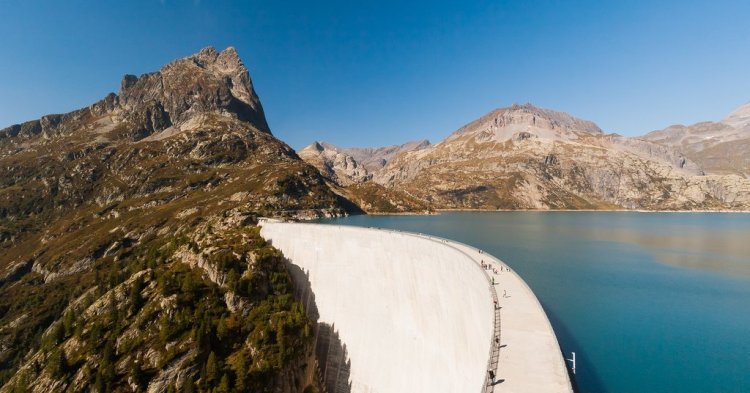After Fukushima in 2011 Switzerland decided – like Germany – to leave nuclear energy production. This was one of the most decisive factors towards a national energy transition. It speeded up the development of renewable energies and focused the view towards a radical reconstruction of the energy system.
Energy strategy 2050
In Switzerland they are looking for a master plan for the energy supply of the future with the help of the newest legislative package, the energy strategy 2050. Since 2011 respectively 2013 they politically struggle for phasing out nuclear energy and reorganisation of the energy system.
The National Council and the Council of States, both chambers of the Swiss Federal Assembly, agreed on no further development of nuclear plants and expiring the existing ones – although with longer service times. Furthermore they decided to take actions to increase energy efficiency and renewable energies.
But these actions are restricted. The compensatory feed-in remuneration (KEF) was capped and limited for a period of six years. With these conditions planning security and a real extensive development of renewables are hard to implement.
Electrical transition is not enough to achieve 2 degree target
These actions are mainly aimed at the electricity sector. Other topics, like heating transition and the electrification of the transport sector, play a minor or no role at all in the energy strategy 2050. But they are significantly important for a successful reduction of CO2.
Switzerland signed the Paris Agreement, too, and committed to support the 2 degree target of the United Nations with its resources. According to the current level further improvements in energy policy are necessary.
Also Switzerland is lagging behind when it comes to the redesign of the energy market. Although efforts in the fields of grid extension and smart metering will be made to improve the efficiency of distribution and electricity trading. There is missing a clear concept for energy storage and connection to the European internal market.
Energy agreement between EU and Switzerland remains blocked
In June 2015 Switzerland should be linked to the energy markets of the European states through Market Coupling and become a member of the large internal energy market. The border-crossing electricity trading should bring positive cost effects and grid stability. But the negotiations remain blocked.
The reason for that are uncompleted upstream negotiations about an institutional framework agreement between Switzerland and the EU. This should legally anchor the general relation between both parties and simplify further cooperation. But the agreement is blocked since the Swiss voted for the immigration referendum in 2014. Furthermore, there are still open questions about a common jurisdiction and the sovereignty of Switzerland.
Switzerland’s role in the energy markets of Europe
Even though the energy agreement would benefit not only for Switzerland. The internal market of Europe is dependent on two functions of the Swiss energy grid. First Switzerland is located in the centre of Europe and is therefore predestined as a transit state, especially in the north-south direction. Priority Southern Germany and Northern Italy need the electricity trading routes through Switzerland.
Second giant pumped storage plants are located in Switzerland. These can be used as batteries for storing the volatile electricity. Energy storage will be a main factor to cope with the integration of the renewable energies.
Future of the Swiss energy supply
The energy strategy 2050 is not the ideal solution as requested. The attempts to reorganise the energy system in Switzerland are too timid, they still show too much consideration for traditional market players. Furthermore, an unconditional commitment towards the renewables is missing. The current subsidy amount will not be enough to generate more electricity from the wind and the sun.
As well the neglect of the heating and transport sectors in the energy strategy 2050 will restrict a successful energy transition in Switzerland. The relations to the great neighbour EU will also be crucial. The development of the internal energy market will receive a severe blow without the energy agreement. This will have an impact on both Switzerland and the EU.


Follow the comments: |
|
